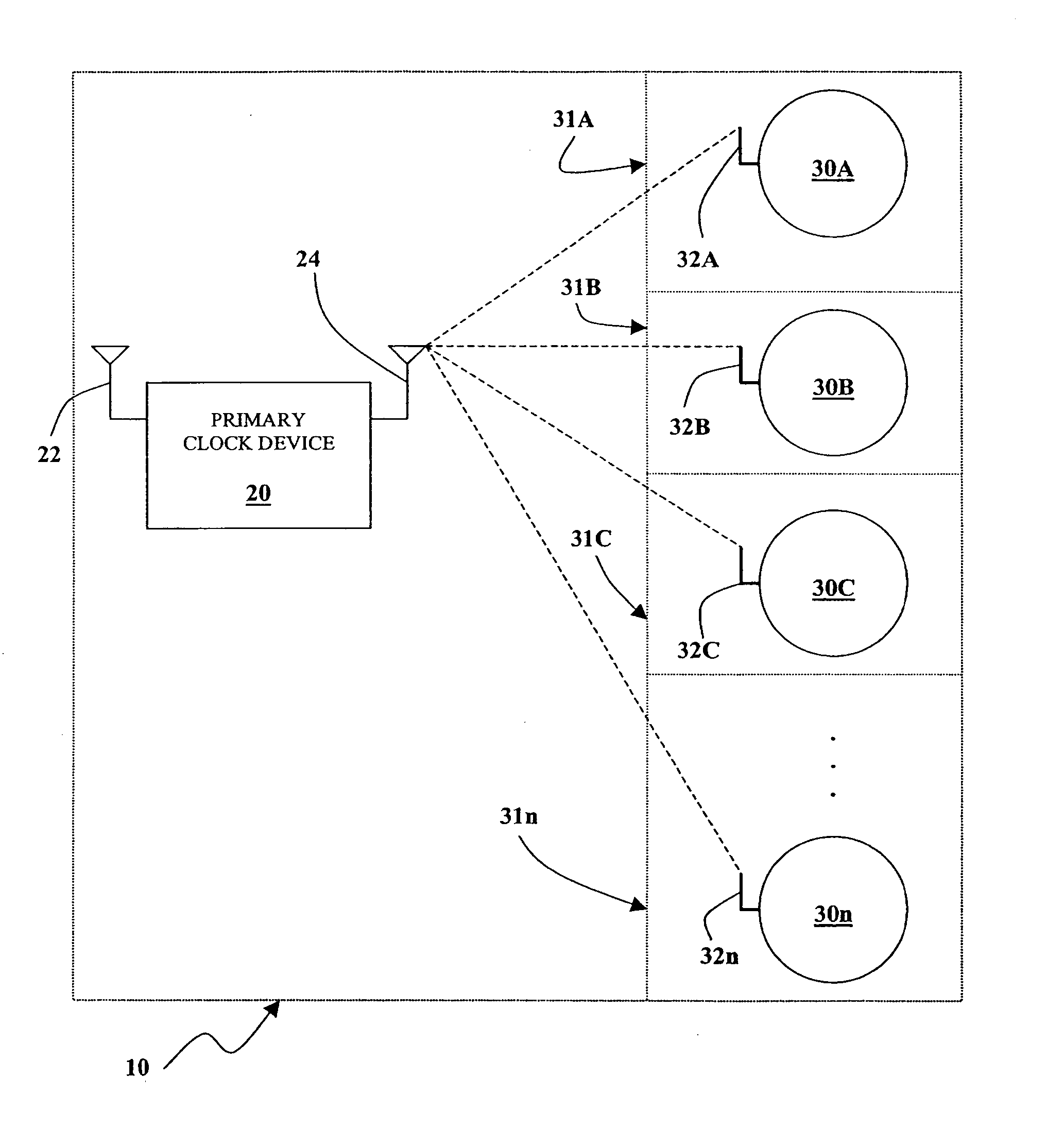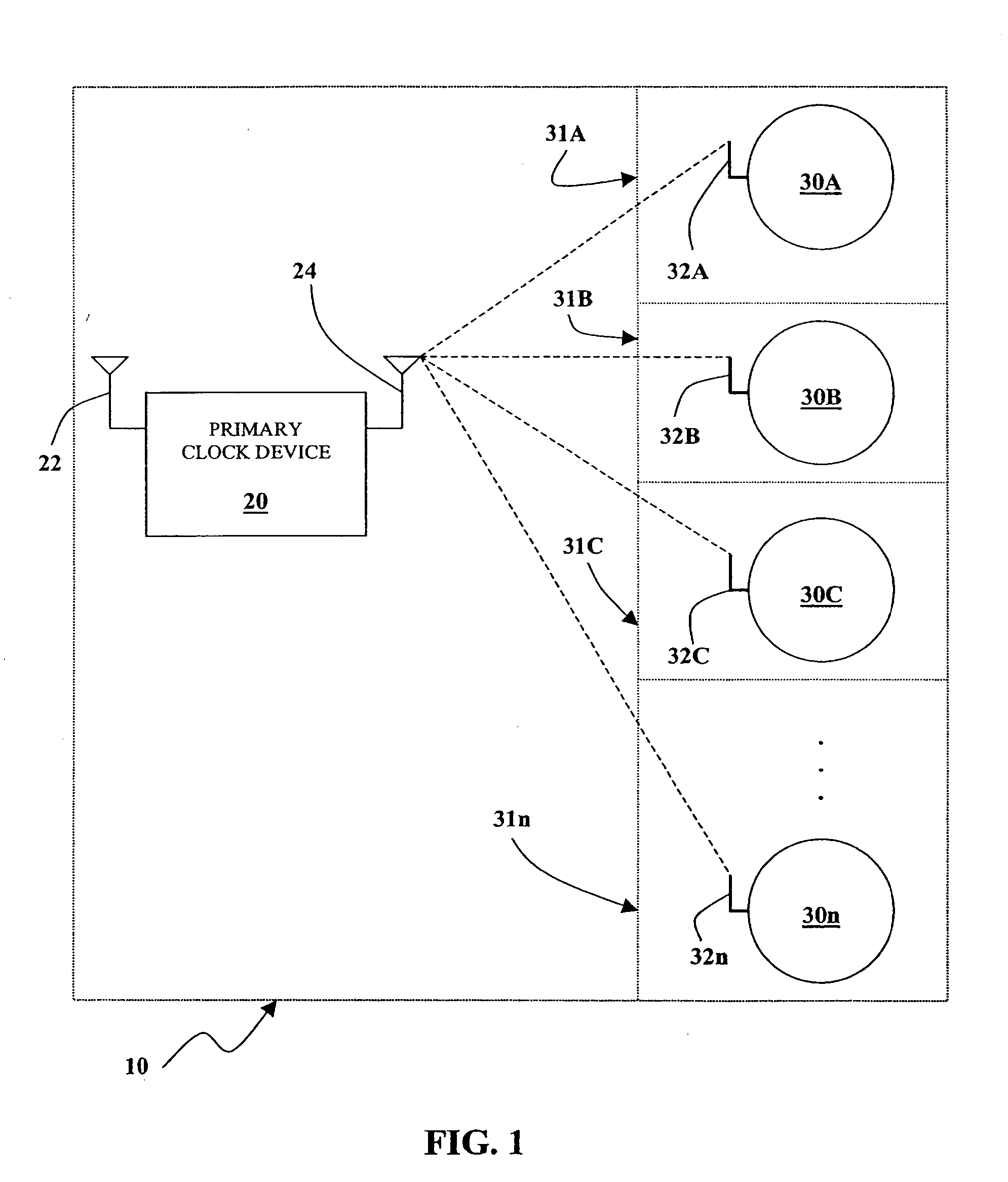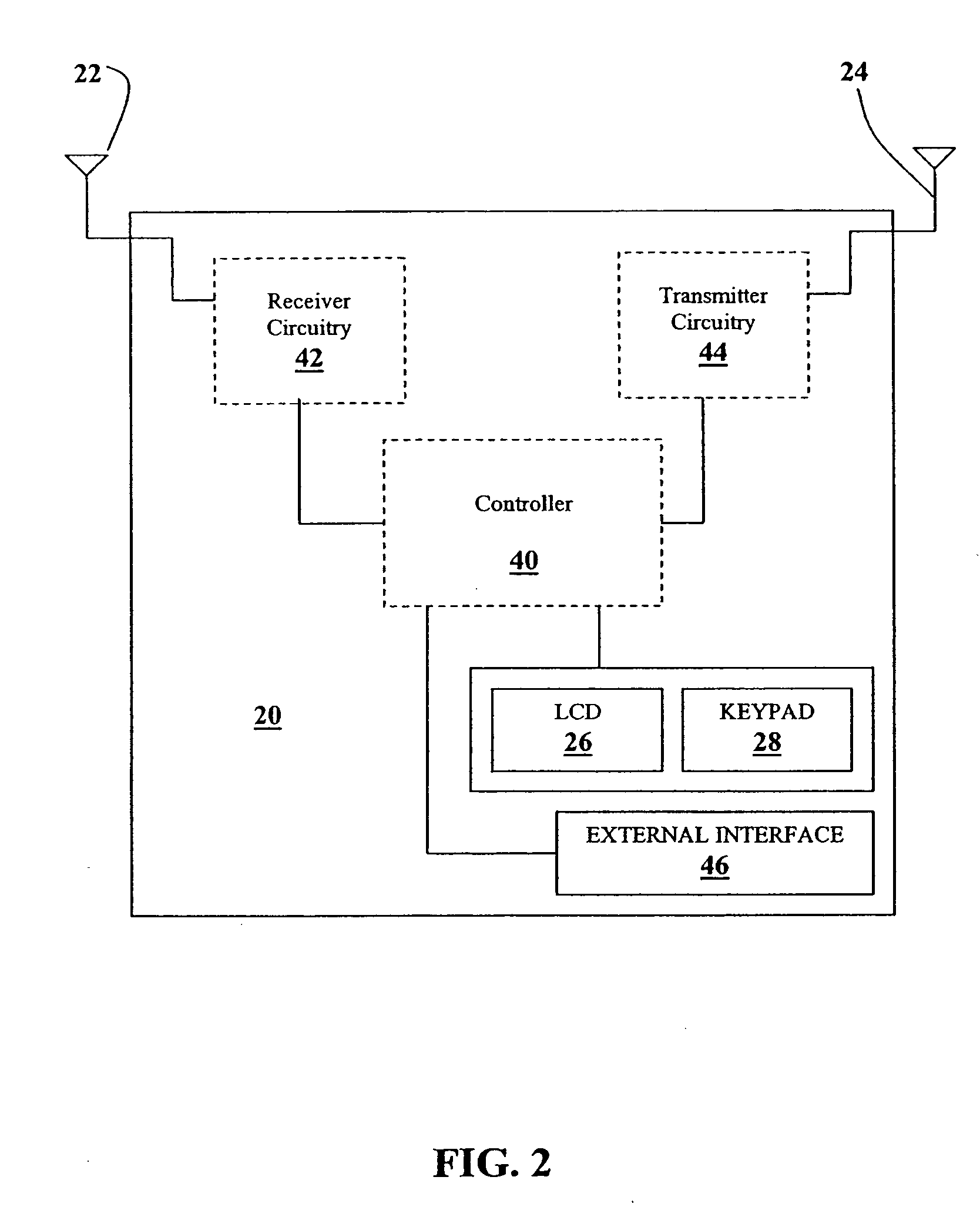Wireless clock system
a clock system and wireless technology, applied in the direction of synchronizing arrangement, digital transmission, electrical equipment, etc., can solve the problems of complex and expensive implementation, inability to maintain synchronization between the primary clock and each of the secondary clocks, and the installation of the current distributed clock system, so as to reduce maintenance costs and facilitate installation and maintenance. , the effect of easy and inexpensive installation
- Summary
- Abstract
- Description
- Claims
- Application Information
AI Technical Summary
Benefits of technology
Problems solved by technology
Method used
Image
Examples
Embodiment Construction
[0027] The wireless clock system of the present invention simplifies the synchronization process in clock systems, distributes a verified time, and reduces the costs associated with maintaining clock synchronization in a locally distributed clock system. The present invention can be more readily understood by reference to FIGS. 1-7 and the following description. While the present invention is not necessarily limited to such an application, the invention will be better appreciated using a discussion of exemplary embodiments in specific contexts.
[0028] The wireless clock system of the invention disclosed and described herein generally comprises a primary clock device and at least one secondary clock device. The system will typically comprise a plurality of secondary clock devices distributed throughout a local geographic area. The local geographic area may comprise a single building, a cluster of buildings, a campus, or a similar and relatively localized area in which a plurality of ...
PUM
 Login to View More
Login to View More Abstract
Description
Claims
Application Information
 Login to View More
Login to View More - R&D
- Intellectual Property
- Life Sciences
- Materials
- Tech Scout
- Unparalleled Data Quality
- Higher Quality Content
- 60% Fewer Hallucinations
Browse by: Latest US Patents, China's latest patents, Technical Efficacy Thesaurus, Application Domain, Technology Topic, Popular Technical Reports.
© 2025 PatSnap. All rights reserved.Legal|Privacy policy|Modern Slavery Act Transparency Statement|Sitemap|About US| Contact US: help@patsnap.com



